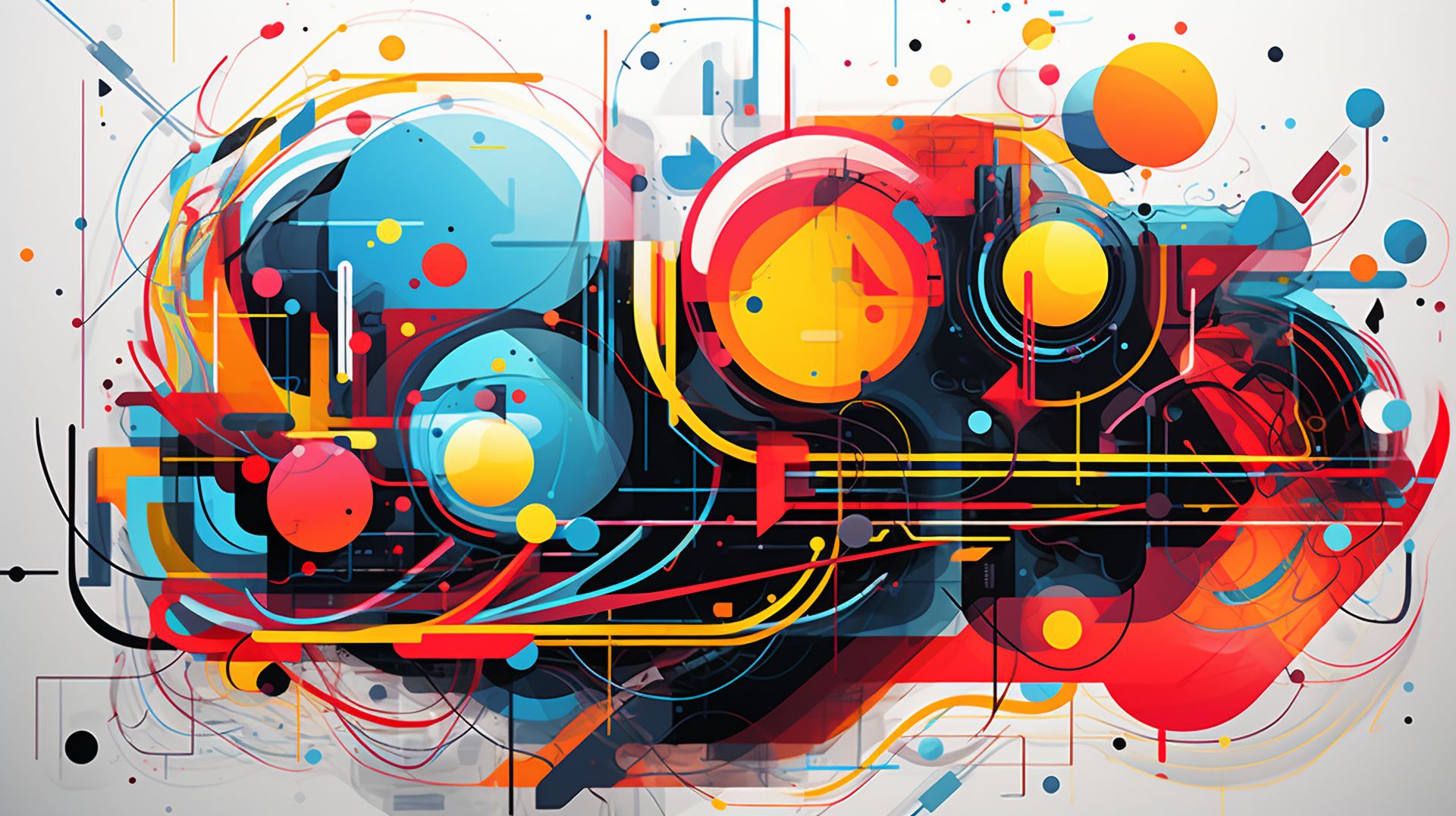We’ll explore the intricacies of Baby AGI vs AutoGPT – each with its own unique capabilities and roles in accomplishing your AI objectives.
When it comes to harnessing the power of AI, ChatGPT undoubtedly stands as a monumental tool. Yet, for project completion, it still hinges on human interaction – the repetitive act of entering prompts at every stage.
Recognizing this friction, tech visionaries have crafted autonomous AI agents capable of carrying out multiple tasks under a single main objective. Now, let’s take a deeper look into two such AI vanguards – Baby AGI and AutoGPT, as we untangle the contrasting aspects of their diverse aspects.
What is Baby AGI?
Now, what exactly is Baby AGI? Developed by Yohei Nakajima, Baby AGI is a marvel of autonomous artificial general intelligence. This ingenious entity thrives on your fed objectives, utilizing a Python script that draws upon technologies from OpenAI, Pinecone, LangChain, and Chroma. Its aim? To automate tasks with laser focus on achieving a specific objective.
Taught BabyAGI to use itself as a skill, but it’s just spinning up more and more BabyAGIs without any of them completing the task… 😅 pic.twitter.com/pVdrdtw83m
— Yohei (@yoheinakajima) July 13, 2023
Contrasting with AI tools like ChatGPT, which employ language models to comprehend your queries and generate responses, Baby AGI harnesses language models to craft a comprehensive task list that is purpose-built to reach an objective. The ingenious AI agent then sequentially executes these tasks, deriving further tasks from previous results until the overarching objective is realized.

What is AutoGPT?
AutoGPT is an autonomous AI agent that leverages the power of OpenAI’s GPT-4 and GPT-3.5 models to accomplish a set objective. When given a specific goal, AutoGPT generates codes to create tasks using GPT-4. The outcomes of these tasks are stored and processed using GPT-3.5, which essentially functions as a virtual memory space for previous tasks.
Unlike many traditional AI tools, AutoGPT is designed to create and execute multiple tasks at once, with the ability to access a wide array of data sources, both locally on a computer and online. It is particularly proficient in generating human-like text responses and is useful for tasks such as generating content, summarizing texts, and translating text into multiple languages.
Your guide to getting the best out of AutoGPT
Baby AGI vs AutoGPT: What are their differences?
But, how do Baby AGI and AutoGPT stack up when we delve into Baby AGI vs AutoGPT? On the surface, both can be wielded to attain a set objective, delivering comparable results. However, the journey towards this objective and the approach employed by each tool is what sets them apart, making the Baby AGI vs AutoGPT comparison a riveting exploration.
Blueprint
The structure of Baby AGI is an amalgamation of OpenAI’s GPT-4 model as the primary language element, LangChain’s coding framework, Pinecone’s vector database, and Chrome. All these technological components are knit together via a Python script to birth a band of AI agents, their mission being to accomplish a series of tasks converging on a predefined objective.
AutoGPT marries the same GPT-4 model from OpenAI with GPT-3.5 in a quest to achieve the same objective. With an objective in sight, AutoGPT masterfully generates codes via GPT-4 to create tasks, the fruits of which are stored and processed with GPT-3.5, functioning as a virtual memory space for past tasks.

Tactics
Baby AGI’s technique, when given an objective, involves spawning multiple tasks and diligently executing them in sequence. This sequence is crafted such that the outcome of one task guides the formulation of the next. Pinecone and LangChain lend a helping hand to the AI agent, enabling the retention of a long-term memory of tasks and events, thereby ensuring rapid data retrieval and efficient objective attainment. Owing to its inherent process of trial and error decoding from past tasks, Baby AGI can navigate complex decision-making scenarios without straying from the overarching objective.
AutoGPT, in contrast, is engineered to simultaneously create and run multiple tasks using GPT-4 while crafting an artificial memory space with GPT-3.5 to archive results from past tasks. This AI agent is equipped to generate supplementary content through various internet apps, services, and locally stored data, thus aiding in more informed decision-making. Yet, the expansive data access of AutoGPT sometimes leads to the extraction of unlabeled data without proper direction, thereby generating extensive but potentially less directed results.
Mission
The Baby AGI vs AutoGPT battle unveils their distinct purposes. AutoGPT, with its training in generating human-like text responses, is a tool of choice for content creation, text summarization, and translation into multiple languages. Its accessibility to internet services and local files make it a reliable partner in crafting detailed textual content based on a singular objective. Essentially, AutoGPT can stand as a viable alternative to ChatGPT, where the generation of similar content would require multiple prompts.
Baby AGI, exhibiting human-like cognitive prowess, shines in tasks that demand control over parameters and decision-making. With carefully designed objectives, Baby AGI’s potential is exploitable in domains such as cryptocurrency trading, autonomous driving, robotics, and even gaming.

Outcome
Delving into the Baby AGI vs AutoGPT results, Baby AGI emerges as an AI trained in real-world scenarios and simulated environments, enabling the completion of intricate tasks with speed and precision. Armed with relevant data, Baby AGI can potentially deliver accurate results swiftly without wavering from the original objective. However, its proficiency is bound by its training data, since its learning environment is based on real-world and simulated scenarios without internet access, thereby limiting its applicability.
AutoGPT’s access to the internet facilitates information search, pulling data from various internet services like apps, websites, books, documents, and articles to accomplish tasks converging on the objective. This facet of AutoGPT is a double-edged sword – while the additional data allows for more descriptive content creation, it can also lead to less accurate results owing to possible extraction from unlabeled data without supervision. Moreover, AutoGPT’s design to operate multiple tasks concurrently can sometimes result in losing sight of the main objective when entangled in one particular task.
Baby AGI’s unique capabilities
There are areas where Baby AGI excels, outpacing AutoGPT. Baby AGI boasts a long-term memory, courtesy of LangChain and Pinecone. These tools allow Baby AGI to store and retrieve information swiftly, providing results with more agility than AutoGPT. Additionally, Baby AGI’s continuous learning from prompts and task results through trial-and-error equips it to make human-like cognitive decisions. This makes it an adept tool for applications like cryptocurrency trading, robotics, and autonomous driving. Further, Baby AGI is proficient in writing and executing codes to meet certain objectives.
Autonomous AI agents are here and AutoGPT is one of the first to arrive
AutoGPT’s unique capabilities
On the other hand, in the Baby AGI vs AutoGPT comparison, there are aspects where AutoGPT outshines Baby AGI. AutoGPT’s extensive data access when generating responses for your predetermined objectives is notable. It efficiently scours content from internet applications, services, websites, articles, and books, enabling deeper insight into a specific subject. AutoGPT also excels in generating high-quality, human-like text, thanks to its broad training data. This makes it a suitable tool for tasks like email drafting, report preparation, and market research.
AutoGPT leverages OpenAI’s DALL-E, enabling image generation capabilities that Baby AGI currently lacks. Another distinctive feature of AutoGPT is its text-to-speech functionality, easily incorporated through a simple Python script code. This voice command functionality is currently not available in Baby AGI.
Featured image credit: Kerem Gülen/Midjourney
- SEO Powered Content & PR Distribution. Get Amplified Today.
- PlatoData.Network Vertical Generative Ai. Empower Yourself. Access Here.
- PlatoAiStream. Web3 Intelligence. Knowledge Amplified. Access Here.
- PlatoESG. Automotive / EVs, Carbon, CleanTech, Energy, Environment, Solar, Waste Management. Access Here.
- BlockOffsets. Modernizing Environmental Offset Ownership. Access Here.
- Source: https://dataconomy.com/2023/07/17/baby-agi-vs-autogpt/
- :is
- :not
- :where
- $UP
- 1
- 13
- 500
- 8
- a
- ability
- access
- accessibility
- accomplish
- accomplishing
- accurate
- Achieve
- achieving
- Act
- Additional
- Additionally
- Agent
- agents
- AGI
- AI
- aim
- All
- allow
- allows
- also
- alternative
- an
- and
- Another
- any
- apart
- applications
- approach
- apps
- Archive
- ARE
- areas
- armed
- Array
- articles
- artificial
- artificial general intelligence
- AS
- aspects
- At
- attain
- automate
- autonomous
- available
- Baby
- BAND
- based
- Battle
- BE
- being
- BEST
- boasts
- Books
- both
- bound
- broad
- but
- by
- CAN
- capabilities
- capable
- carefully
- carrying
- certain
- ChatGPT
- choice
- Chrome
- code
- codes
- Coding
- cognitive
- COM
- comes
- comparable
- comparison
- completing
- completion
- complex
- components
- comprehend
- comprehensive
- computer
- content
- content-creation
- continuous
- contrast
- control
- converging
- craft
- create
- creation
- credit
- cryptocurrency
- cryptocurrency trading
- Currently
- dall-e
- data
- data access
- Database
- Decision Making
- decisions
- Decoding
- deeper
- deliver
- delivering
- Demand
- Design
- designed
- detailed
- developed
- differences
- diligently
- direction
- distinct
- distinctive
- diverse
- do
- documents
- domains
- draws
- driving
- each
- easily
- efficient
- efficiently
- element
- emerges
- employed
- enabling
- ensuring
- entering
- entity
- Environment
- environments
- equipped
- error
- essentially
- Even
- events
- Every
- exactly
- execute
- Executes
- executing
- Exhibiting
- expansive
- exploration
- explore
- extensive
- extraction
- facilitates
- Feature
- Fed
- Files
- First
- Focus
- For
- formulation
- Framework
- friction
- from
- Fruits
- functionality
- functioning
- functions
- further
- gaming
- General
- general intelligence
- generate
- generates
- generating
- generation
- getting
- giants
- given
- goal
- guide
- Guides
- hand
- Harnessing
- Have
- helping
- here
- high-quality
- How
- However
- HTTPS
- human
- image
- image generation
- in
- Incorporated
- information
- informed
- inherent
- insight
- Intelligence
- interaction
- Internet
- internet access
- into
- intricacies
- IT
- ITS
- itself
- journey
- jpg
- just
- knit
- language
- Languages
- laser
- lead
- Leads
- learning
- LEND
- less
- leverages
- like
- List
- local
- locally
- long-term
- Look
- losing
- Main
- make
- MAKES
- Making
- many
- Market
- market research
- marvel
- max-width
- Meet
- Memory
- Mission
- model
- models
- monumental
- more
- Moreover
- multiple
- Navigate
- next
- notable
- now
- objective
- objectives
- of
- on
- once
- ONE
- online
- OpenAI
- operate
- original
- Other
- out
- Outcome
- outcomes
- over
- overarching
- own
- parameters
- particular
- particularly
- partner
- past
- plato
- Plato Data Intelligence
- PlatoData
- possible
- potential
- potentially
- power
- Precision
- preparation
- previous
- primary
- process
- processed
- project
- proper
- providing
- prowess
- pulling
- purposes
- Python
- queries
- quest
- rapid
- reach
- real world
- realized
- relevant
- reliable
- repetitive
- report
- require
- research
- responses
- result
- Results
- retention
- robotics
- roles
- Run
- s
- same
- scenarios
- Search
- Sequence
- Series
- Services
- set
- Sets
- Sight
- similar
- Simple
- simultaneously
- since
- single
- singular
- skill
- Sources
- Space
- specific
- speed
- stack
- Stage
- stand
- stands
- Still
- store
- stored
- structure
- subject
- such
- suitable
- supervision
- Surface
- swiftly
- Take
- Task
- tasks
- tech
- technological
- Technologies
- Text-to-Speech
- than
- thanks
- that
- The
- their
- Them
- then
- There.
- thereby
- These
- this
- Through
- to
- together
- tool
- tools
- towards
- Trading
- traditional
- trained
- Training
- Translation
- trial
- trial and error
- true
- two
- under
- undoubtedly
- unique
- until
- Unveils
- upon
- use
- using
- Utilizing
- various
- via
- viable
- Virtual
- visionaries
- Voice
- vs
- we
- websites
- What
- when
- which
- while
- wide
- with
- without
- would
- writing
- yet
- Your
- zephyrnet











